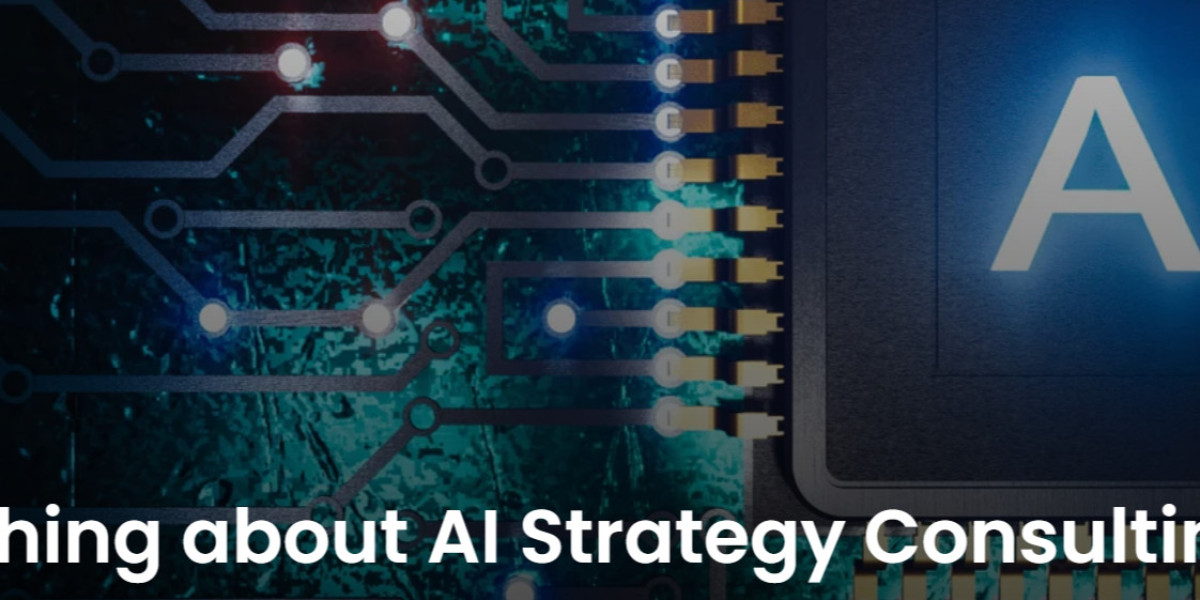AI Strategy is a big picture thinking for all things AI within an organization. An AI strategy is a clear and structured plan for integrating artificial intelligence into an organization’s operations while staying aligned with its overall business goals. It acts as a roadmap for using AI technologies to spark innovation, boost efficiency, and achieve tangible results. A strong AI strategy lays out the steps needed to reach key objectives, such as gaining deeper insights from data, automating tasks, enhancing customer experiences, and improving supply chain performance. It also considers important factors like infrastructure needs, ethical responsibilities, and the ability to adapt to ever-evolving technologies.
Benefits of a Successful AI Strategy
Benefits of a Successful AI Strategy
A well-implemented AI strategy drives transformation and ensures measurable value across operations. Key benefits include:
- Enhanced Decision-Making: AI generates actionable insights from structured and unstructured data, enabling faster and more accurate decisions.
- Optimized Resource Allocation: Strategic planning ensures efficient use of budgets, tools, and talent to maximize impact.
- Scalability: A structured approach supports expansion across departments, creating consistent enterprise-wide benefits.
- Future-Readiness: Adaptability to emerging AI trends ensures agility in responding to technological advancements.
- Workforce Empowerment: Developing AI-focused skills through training programs equips teams to adopt and manage AI effectively.
Steps in Building an Effective AI Strategy
Developing an effective AI strategy requires a structured approach to ensure alignment with organizational goals and measurable results.
- Explore AI Technologies Understanding AI capabilities—including machine learning (ML), natural language processing (NLP), generative AI, and computer vision—is vital. Identifying industry-specific use cases helps determine where AI can solve problems, enhance efficiency, and provide value.
- Assess Organizational Readiness Evaluate IT infrastructure, data quality, and workforce expertise. Engage stakeholders across departments to identify priority areas where AI can create meaningful improvements.
- Clearly Define Objectives Set specific, measurable goals to ensure that AI projects effectively address challenges and support business priorities, such as improving customer engagement through personalization or enhancing supply chain forecasting.
- Select Appropriate Partners Choose AI vendors, tools, and consulting services that align with organizational needs. Factors like industry experience, cost-effectiveness, and compatibility with objectives are critical for smooth implementation.
- Create a Phased Roadmap An actionable roadmap prioritizes early wins to build momentum. Key focus areas include:
- Data Management: Establish governance frameworks for high-quality, accessible data.
- Algorithm Development: Define processes for designing, training, and validating AI models.
- Infrastructure Scaling: Choose scalable solutions, such as cloud-based, on-premises, or hybrid systems, to support AI deployment.
- Communicate the Strategy Effectively communicate the AI strategy to stakeholders to garner support and secure resources. Highlight alignment with business goals, expected ROI, and ethical considerations to build confidence in proposed initiatives.
- Talent Development Invest in training programs, certifications, and upskilling initiatives to equip employees with relevant expertise. A culture of continuous learning and innovation ensures sustainable AI adoption.
- Monitoring and Adaptation Regularly evaluate AI implementation to ensure alignment with defined objectives. Adjust strategies to incorporate emerging technologies, address challenges, and capitalize on new opportunities.
- Risk Management Identify and mitigate potential risks associated with AI adoption. Focus areas include addressing algorithmic bias, ensuring data security, maintaining regulatory compliance, and safeguarding ethical practices. A proactive risk management plan builds resilience and ensures responsible AI deployment.
Common Challenges in Implementing an AI Strategy
While AI offers transformative potential, its adoption often faces challenges:
- Data Limitations: Incomplete or inconsistent data can hinder AI model performance. Effective data governance is critical.
- Skill Gaps: A shortage of expertise in AI-related fields like data science and machine learning may delay progress.
- Strategic Misalignment: AI initiatives must directly address business needs to deliver tangible value.
- Ethical and Regulatory Concerns: Address algorithmic bias, data privacy, and compliance to ensure responsible AI adoption.
Conclusion
An effective AI strategy enables organizations to harness the transformative power of AI technologies. By aligning AI initiatives with business priorities, addressing challenges, and investing in scalable infrastructure and talent development, organizations can achieve measurable success. Proactive planning, regular monitoring, and adaptation to emerging trends ensure that AI remains a strategic driver of innovation and competitiveness.
Key Insights: The three actionable insights, including the importance of assessing organizational readiness, selecting the right AI tools, and investing in employee training for AI adoption.








